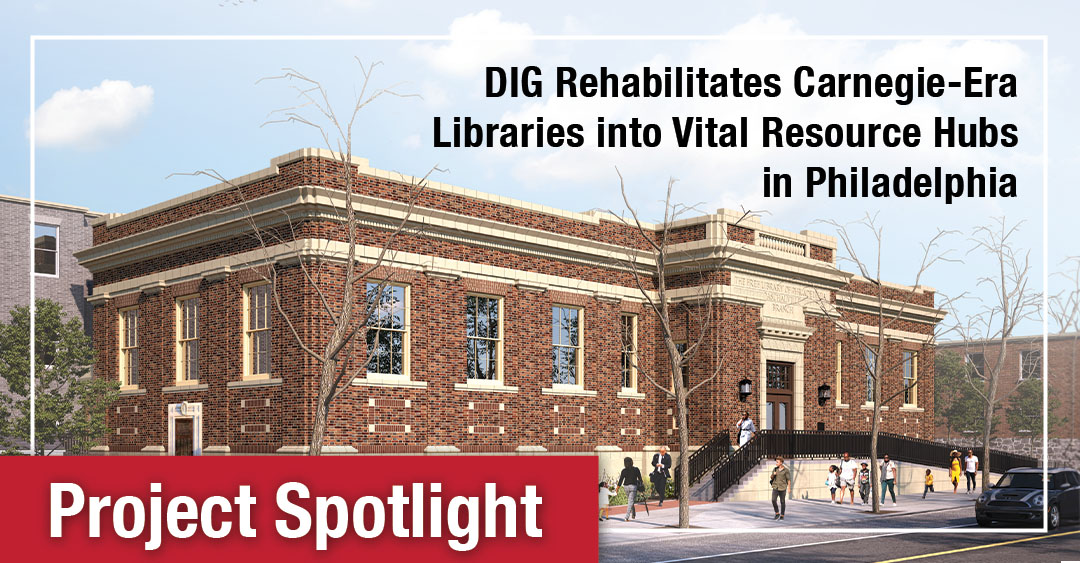For DIG, built-heritage conservation – more commonly referred to as rehabilitative architecture – has become a prevailing focus across Greater Philadelphia. While working in cooperation with Rebuild Philadelphia, the firm’s two latest architect-of-record assignments are presenting unique opportunities to modernize two Free Library of Philadelphia branches that are important architectural archives and community focal points with significant cultural, economic and social value.
“Historic rehabilitation has a deeper meaning that extends well beyond protecting or modernizing a building that has been around for a long period of time,” said Vince Myers, President. “It is about creating a record of the past, including materials and techniques from a bygone era, as well as being environmentally and socially responsible by preserving historic character and extending the lifespan of a significant pillar of the community.”
According to the National Historic Preservation Act, which affirms the importance of historic architecture, historic rehabilitation is defined as the need to alter or add to a historic property to meet continuing or changing uses while retaining the property’s historic character. “In short, this gives a building a new lease on life while allowing future generations to connect with its past in a reimagined setting,” said Myers.
DIG’s enduring success in historic rehabilitation is fueled by a talented multi-disciplinary team of experienced architects, interior designers and graphic designers committed to shaping modern spaces through replication of historic characteristics. Strategies include re-envisioning notable buildings and spaces in need of repairs by reusing existing materials, elements and features wherever and whenever possible.
Two such examples are the Carnegie-funded Paschalville (circa 1915) and Blanche A. Nixon Cobbs Creek (circa 1925) Library Branches, where ground has been broken for the $13.2 million and $8.5 million reconstruction of these early 20th-Century-era buildings, respectively. Serving the Paschalville, Elmwood and Cobbs Creek neighborhoods, these important community anchors are a key resource for local students and workforce development.
Like many historic places, the libraries required a site, structure, health and life safety analysis that included an ADA/code compliance review, zoning analysis and historic designation review, all of which were part of the facility conditions assessment conducted by DIG. In keeping with the firm’s commitment to involve members of the greater community in which its projects are located, the DIG team sought extensive feedback from neighbors and end users of all ages. At both Paschalville and Cobbs Creek, construction is expected to be completed by year end.
Philadelphia’s Rebuild Program is the catalyst for historic investment in public spaces across the city. Unique in nature, the Rebuild Program involves user groups and/or nonprofit organizations with deep neighborhood roots that serve as “developers,” who are responsible for the execution and completion of projects of paramount importance to their immediate-area community.
“We are extremely proud of our work with Rebuild as well as the stakeholders, who are an integral partner in our community-engagement strategies and key to the success in restoring and delivering these vital assets back to the city of Philadelphia,” said Myers. “These projects exemplify and embody our Architecture for Change mission and unwavering commitment to bring high-quality, sustainable architecture to all neighborhoods.”
Other historic preservation and restoration projects within the Greater Philadelphia Metro with which DIG has been or is currently involved include award-winning assignments at Camden High School and Trenton Central High School, as well as in Ewing Township, NJ where the firm is currently handling the restoration of a historic Louis Kahn bath house. Additionally, the firm is involved with a third Carnegie-funded library in Long Branch, N.J.

